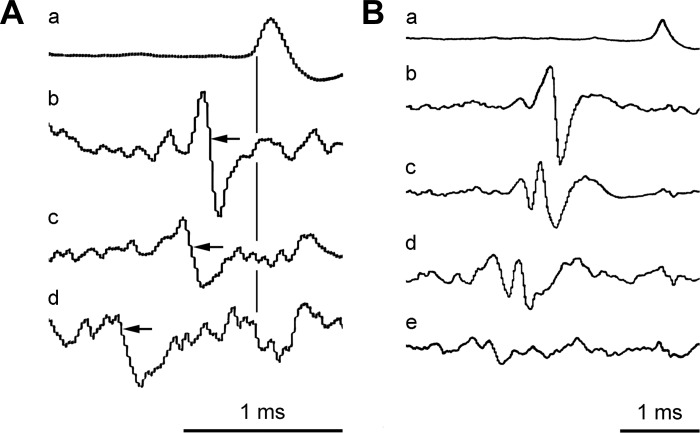Fig. 4.
Spike-triggered averaging for estimating peripheral conduction times. Trigger spikes (a) were efferent spikes recorded at the cut end of the nerve; the other traces show averages from the nerve at a more proximal site. A: T8EO nerve. Selected trigger spikes: b, large alpha; c, small alpha; d, gamma. Gains are arbitrary, except gain for d (2,048 sweeps) was 2 times gain for b and c (each 1,024 sweeps). B: L1Dist nerve. Selected trigger spikes: b, large alpha; c, medium-sized alpha; d, small alpha; e, gamma (spike amplitude range overlapped with that for d). Gains are arbitrary, except gain for d (1,024 sweeps) was 2 times gain for b and c (each 512 sweeps); gain for e (2,048 sweeps) was 4 times gain for b and c. Conduction time measurements are illustrated in A for each of the groups of efferents detected (times from vertical line to points of arrows).

